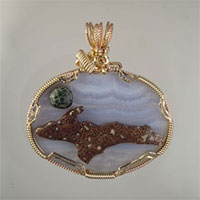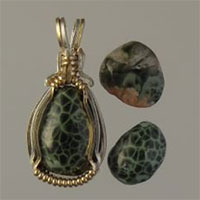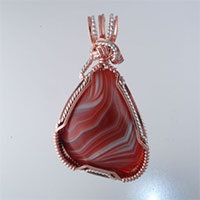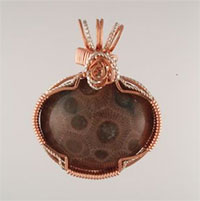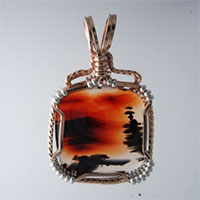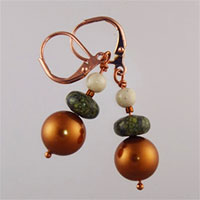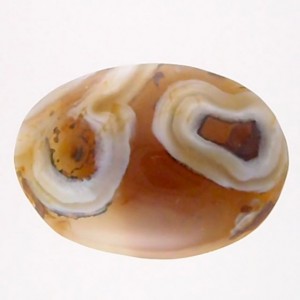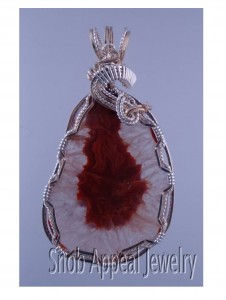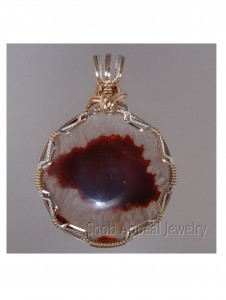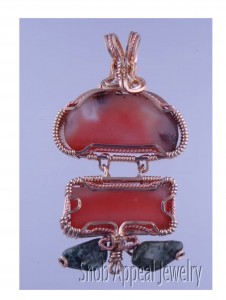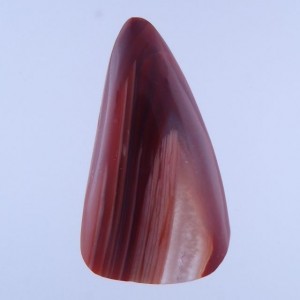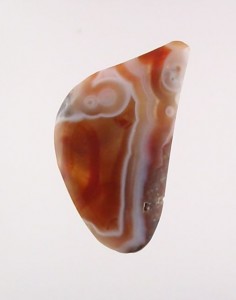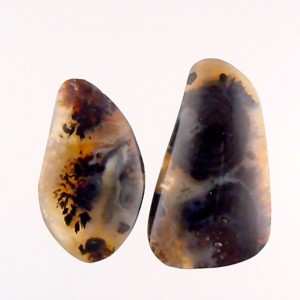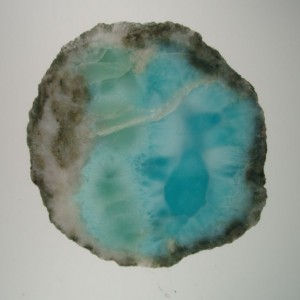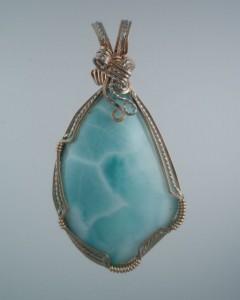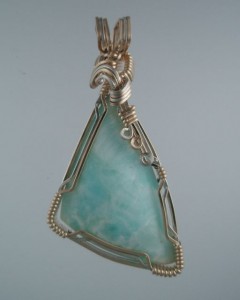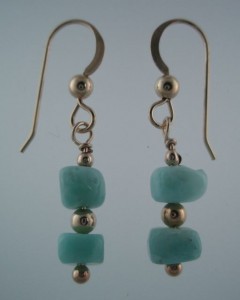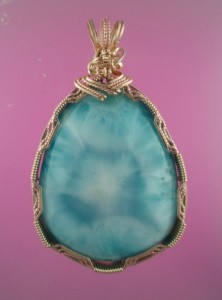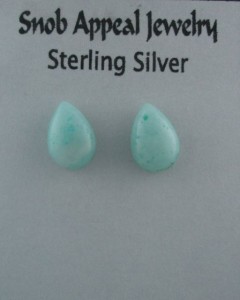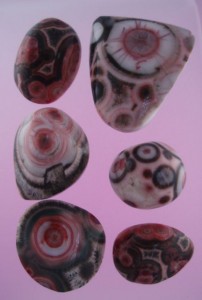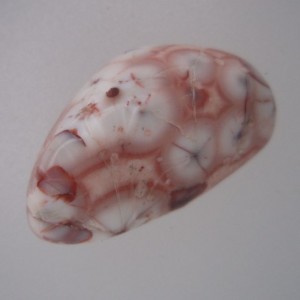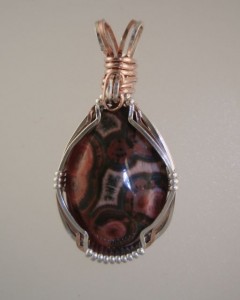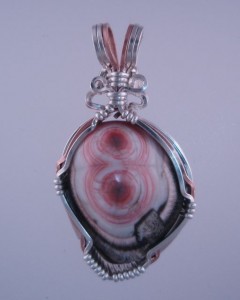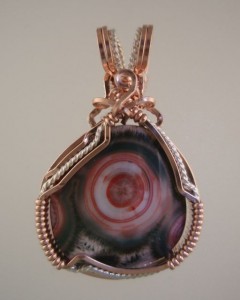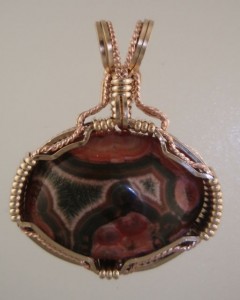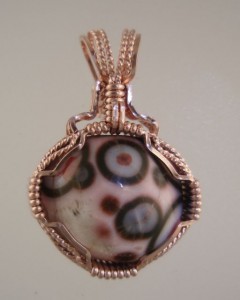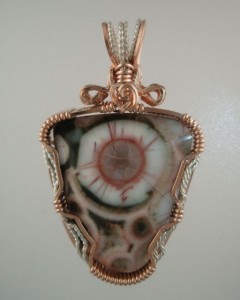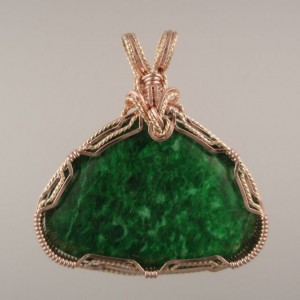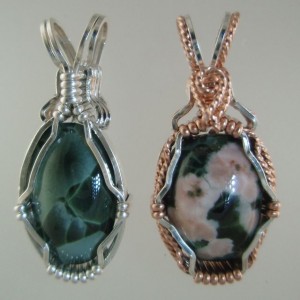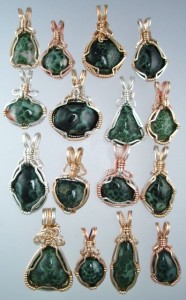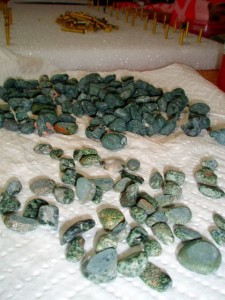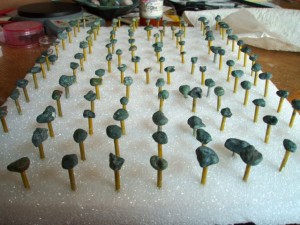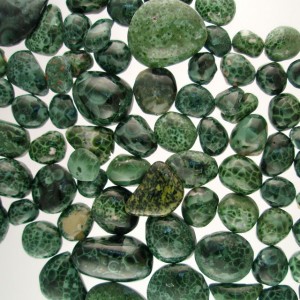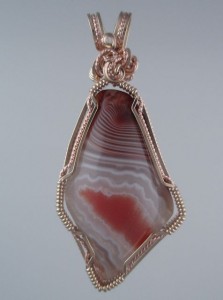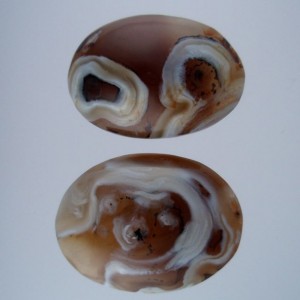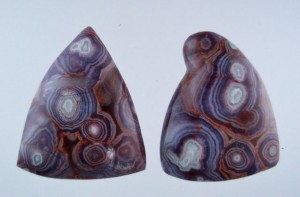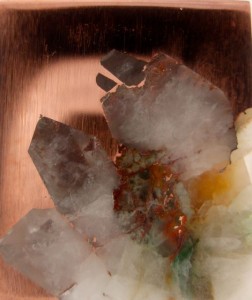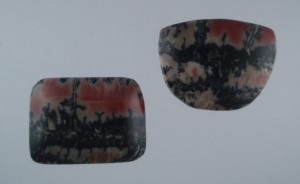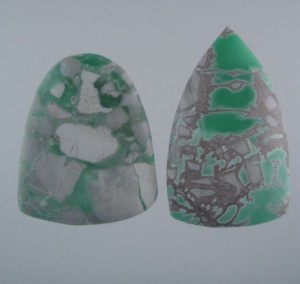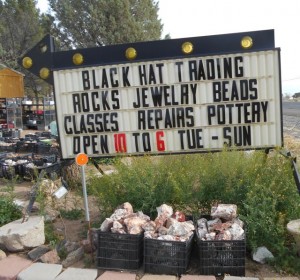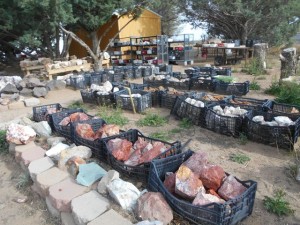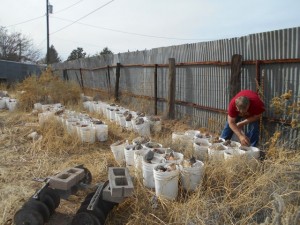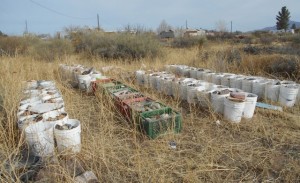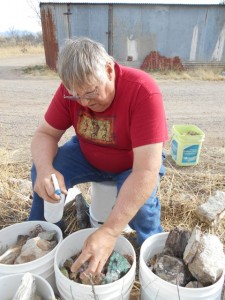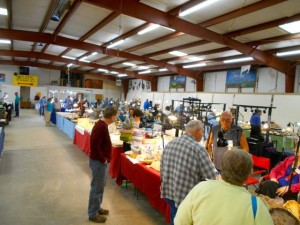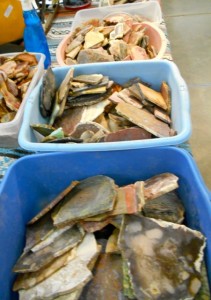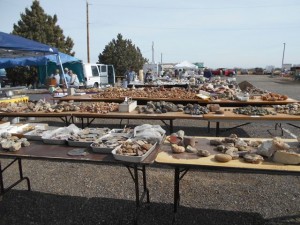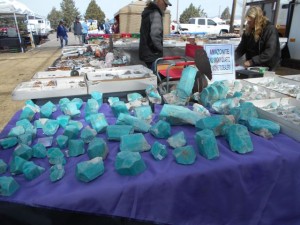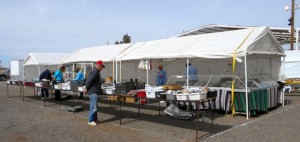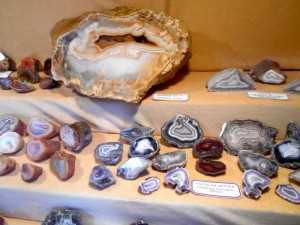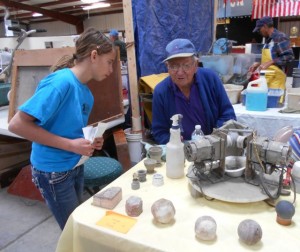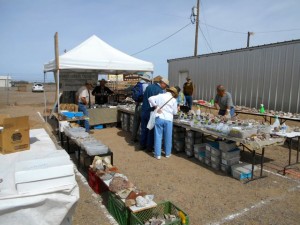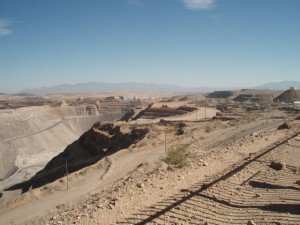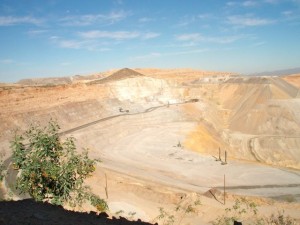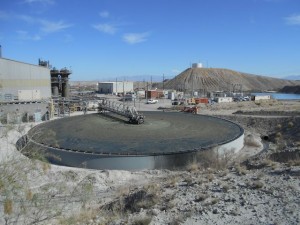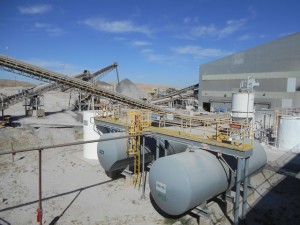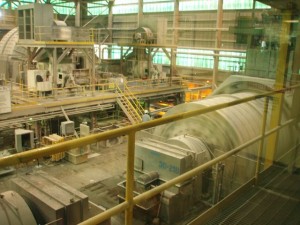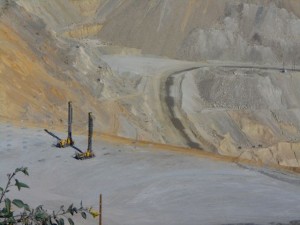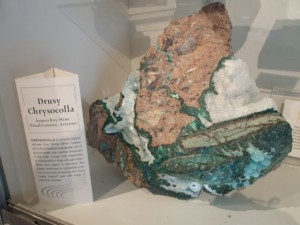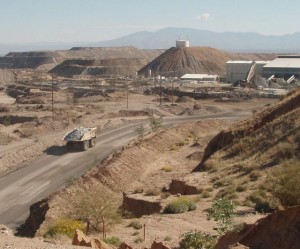On occasion a customer may choose a different precious metal, or style over the way a pendant is wrapped, or design. Even though I carefully craft each pendant, I always put customer satisfaction over other considerations.
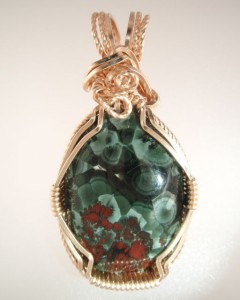
The original wrap of the most unusual Greenstone I've ever cut and wrapped.
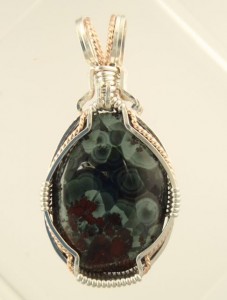
Normally, a nominal additional fee is involved in the re-wrap. My recent re-wrap involved probably the most stunning Greenstone I have ever found, or most knowledgeable rock aficionados, have ever seen; an ultra rare Greenstone infused with beautiful red Cuprite. I have found no one, including folks at the Seaman Mineral Museum, that has seen this gorgeous mineral combination.
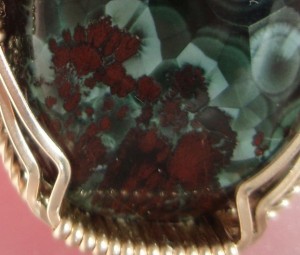
Close-up of the Cuprite in this Greenstone.
My discriminating customer informed me his wife preferred Silver and a more simple wrap, over the gold more elegant wrap. I thought just a couple pink gold wires would further enhance the Greenstone. Pink Gold looks remarkable with Greenstone. My customer was in agreement with the pair of pink gold wires. Pink gold resembles copper, and Greenstone (Chlorastrolite) is a copper-associated mineral.
Here are the original Greenstone, as well as the reincarnation. I was happy in both cases, and this just shows how wraps can be different styles, and yet still be amazing. I’d like you go to my Facebook business page and comment on which wrap you prefer (if you are a FB user).
Also, since I am talking about Greenstone, my most recent stash seems like it had some good potential. The difficulty with Greenstone is that you never know what you have, It is not uncommon to cut a hundred stones to get one really good one. Half your finds may not even be Chlorastrolite. Some will be Calcite Balls, Copper Balls, or Mud Balls. They can also be Greenstone wannabes, or for a better description, half-baked Greenstones. You guys that have collected, and worked with this material, know exactly what I’m talking about. The rock hunter can begin with a good size pile of stone and after lapidary work, end up with very little, or maybe sadly nothing. But when Karma is smiling on you, the Michigan Greenstone Jewelry that can result, is very special indeed.


